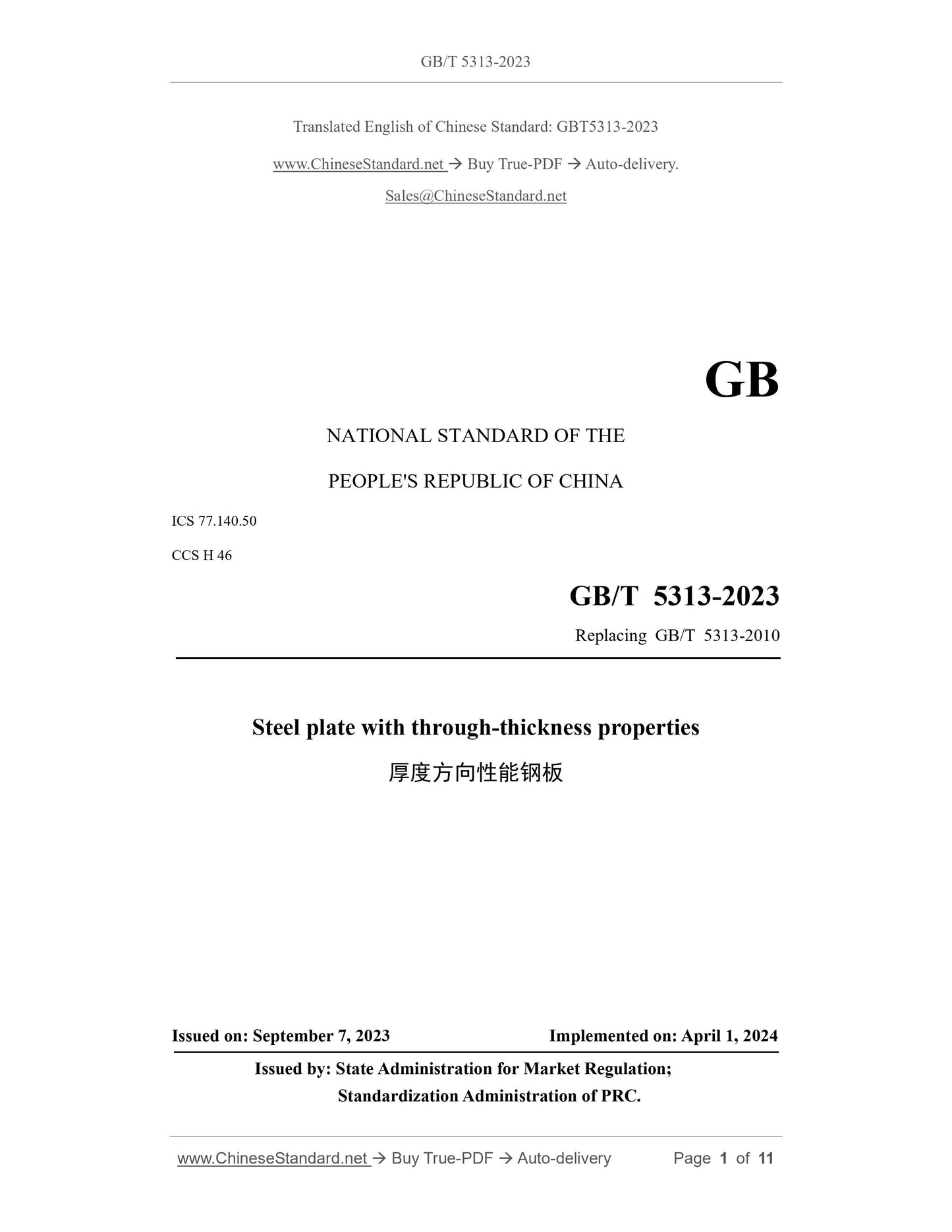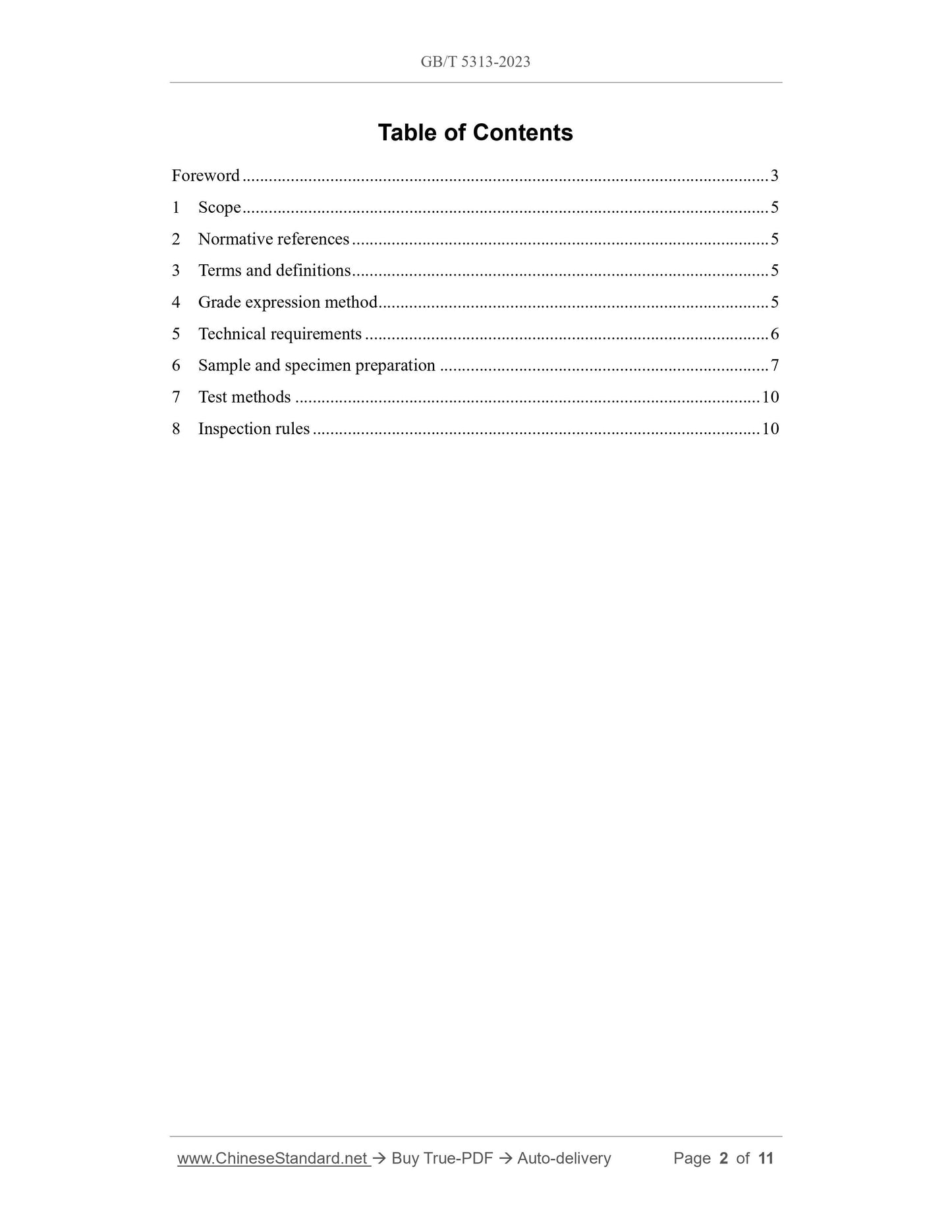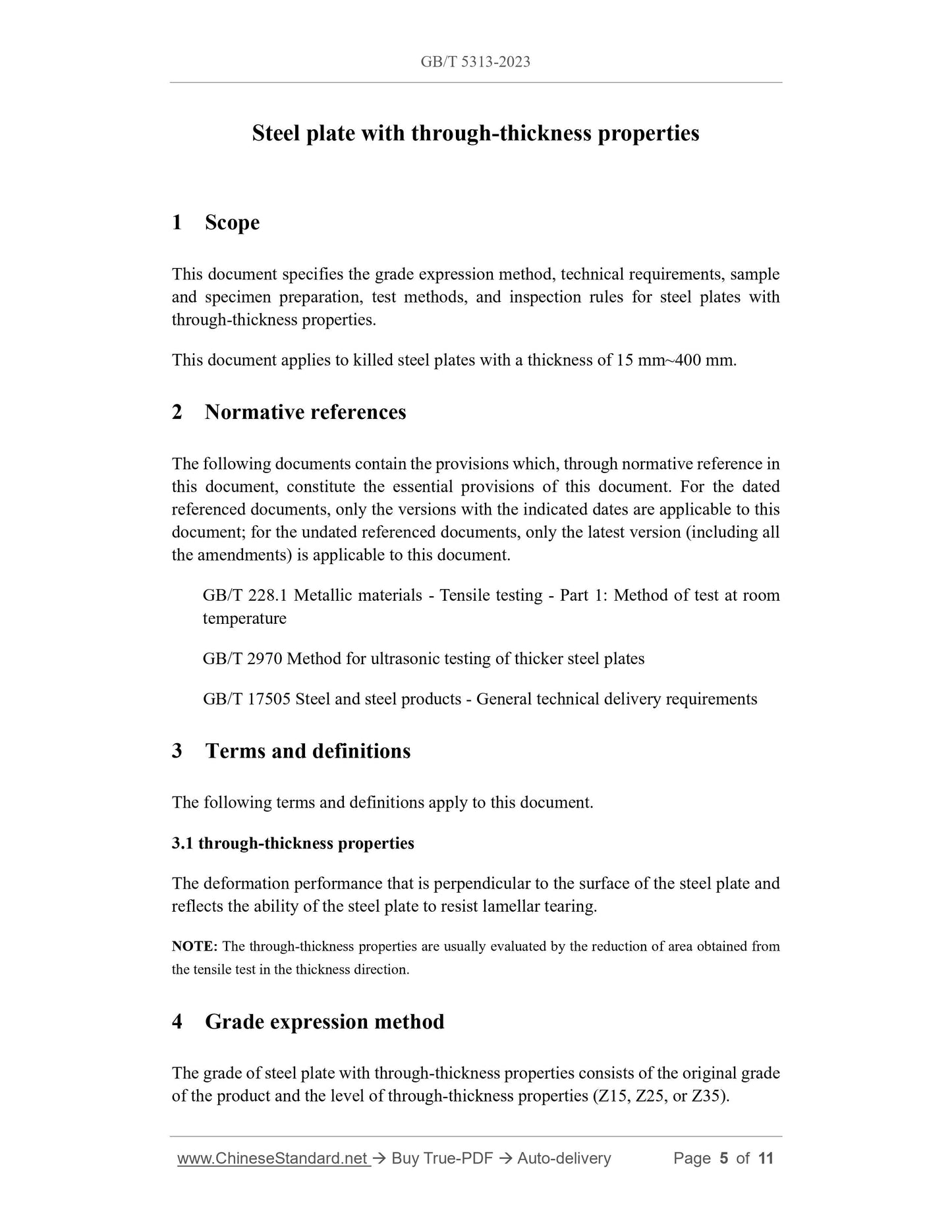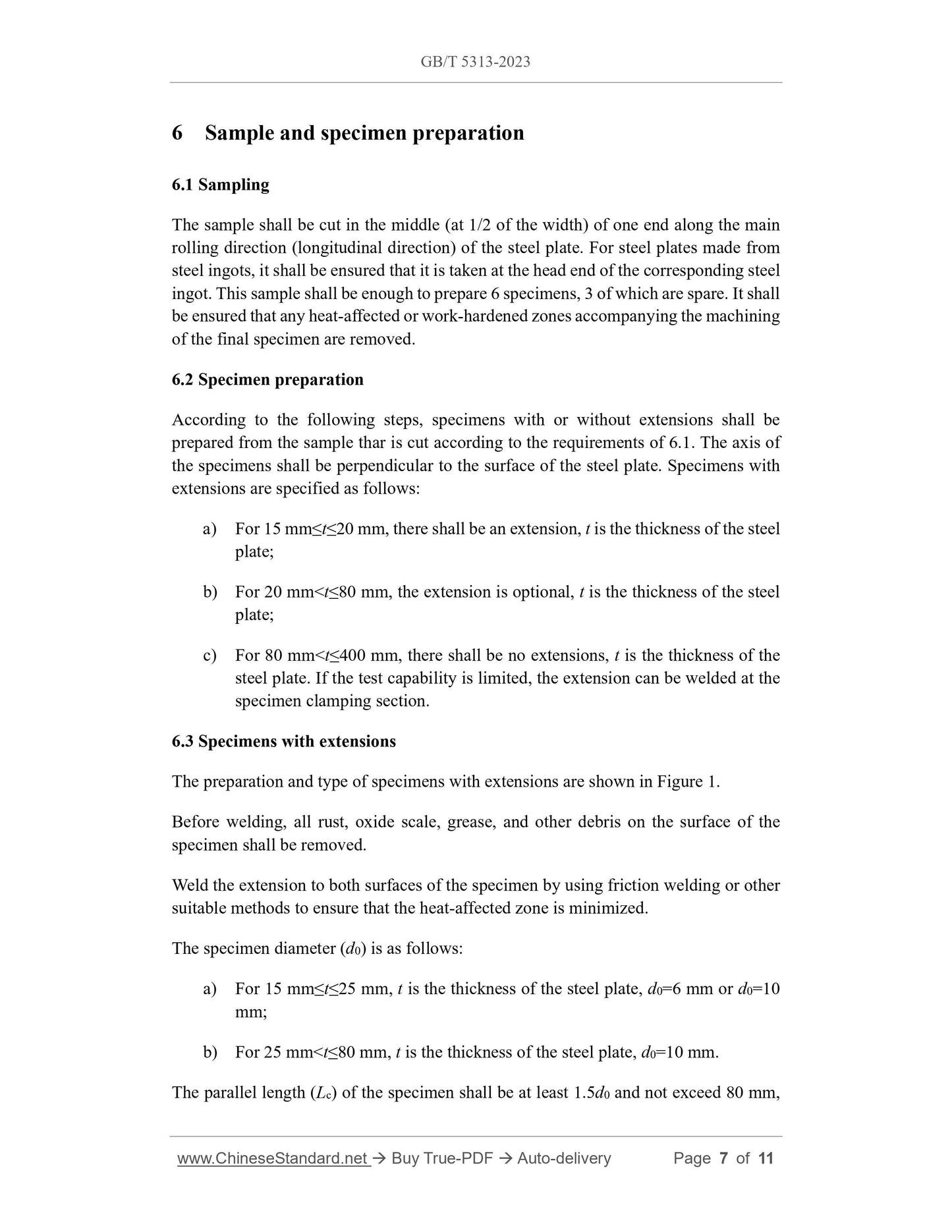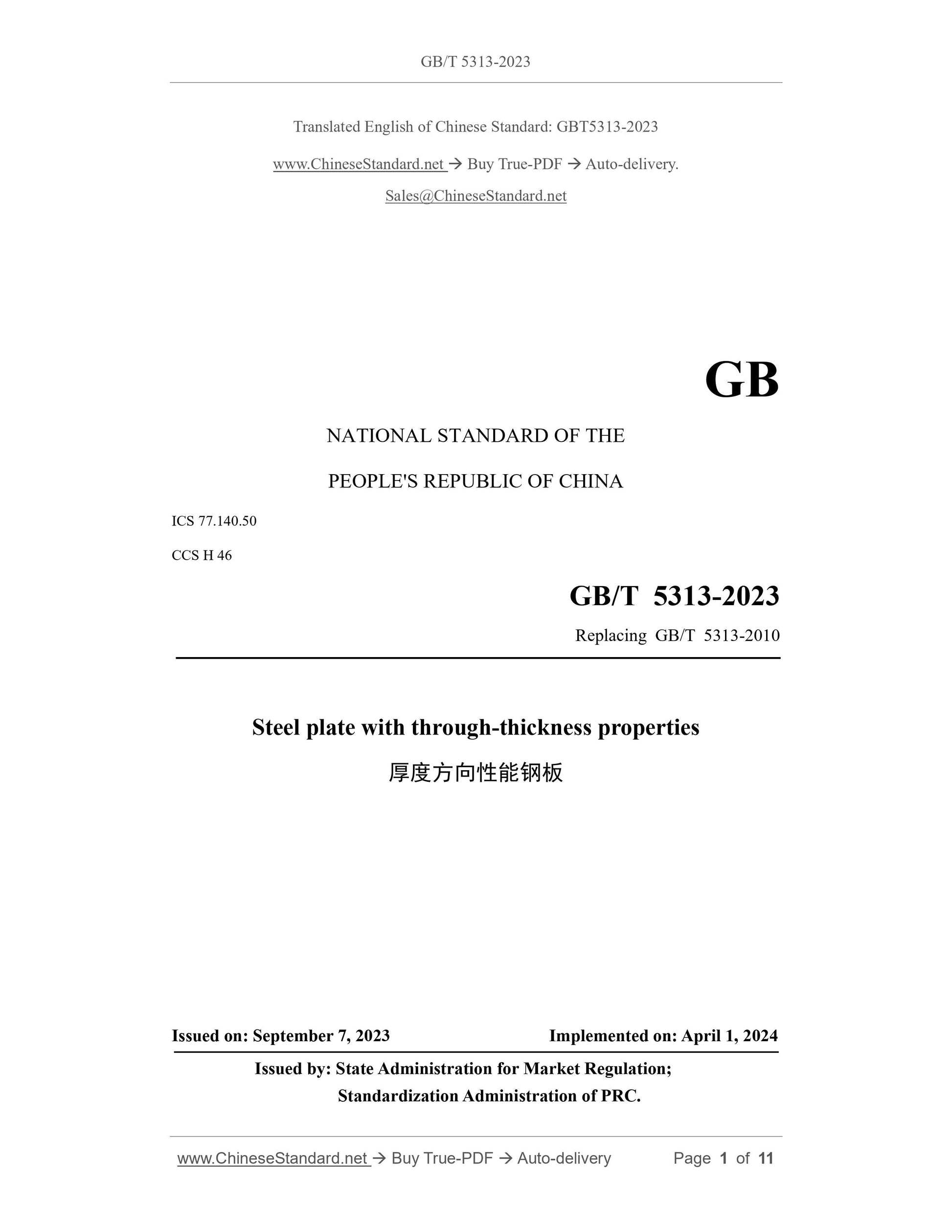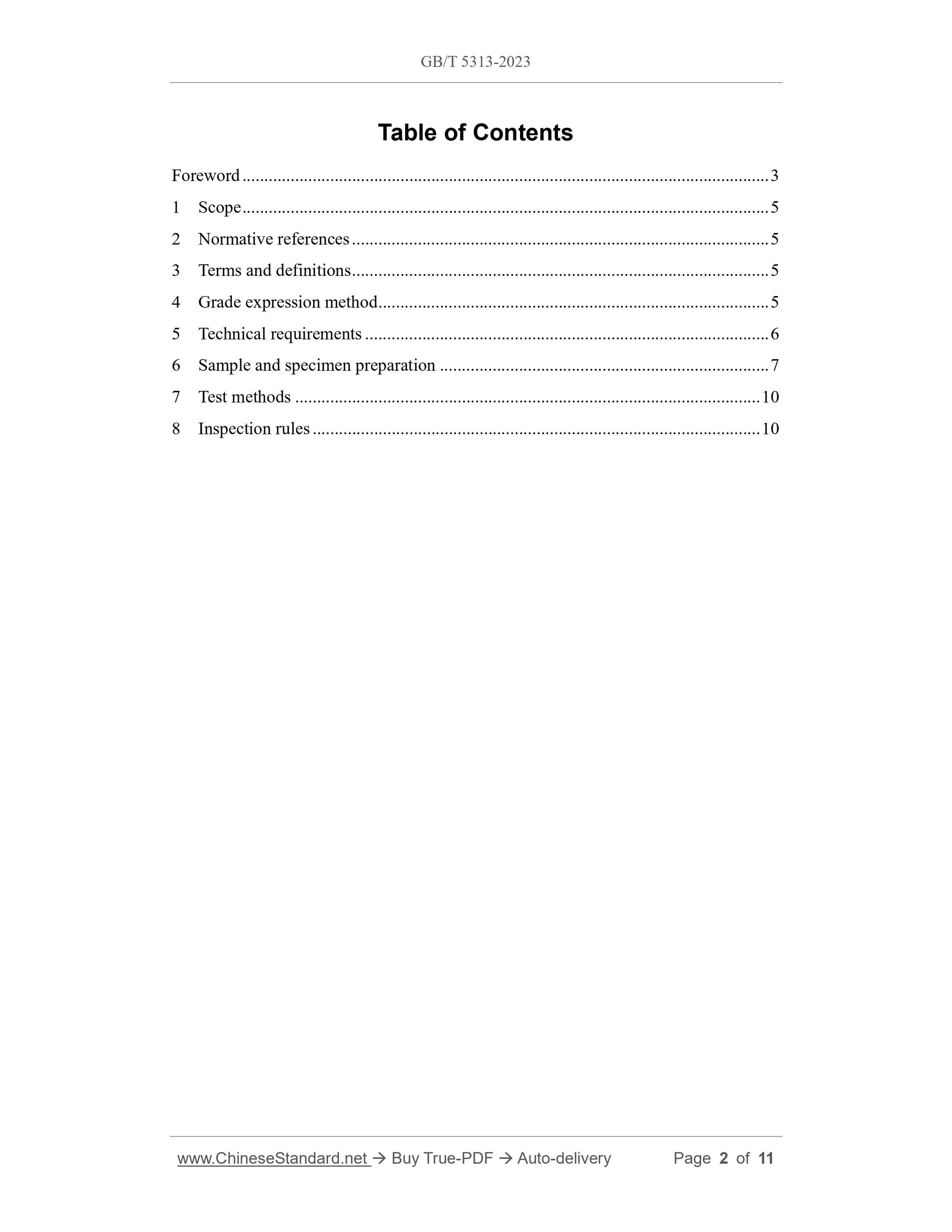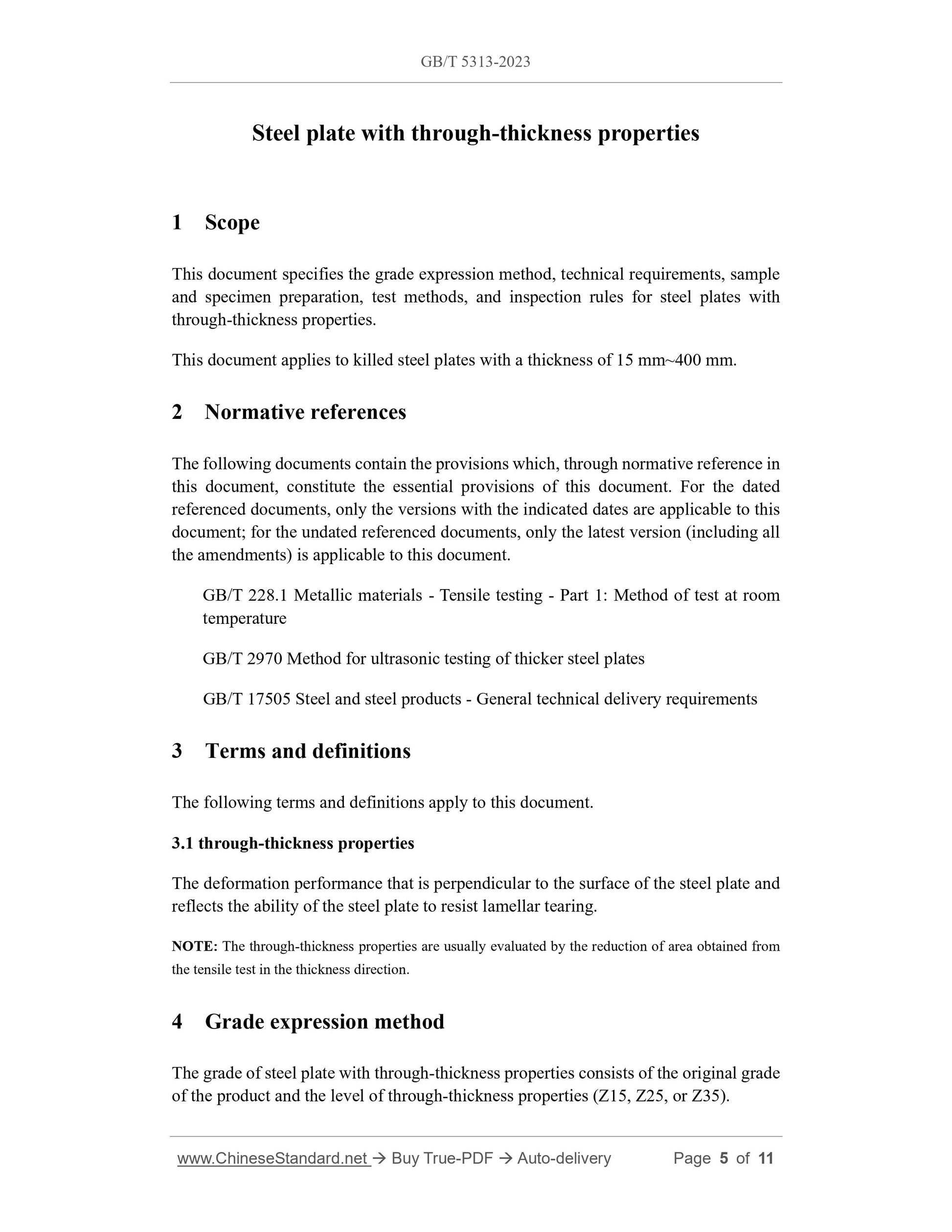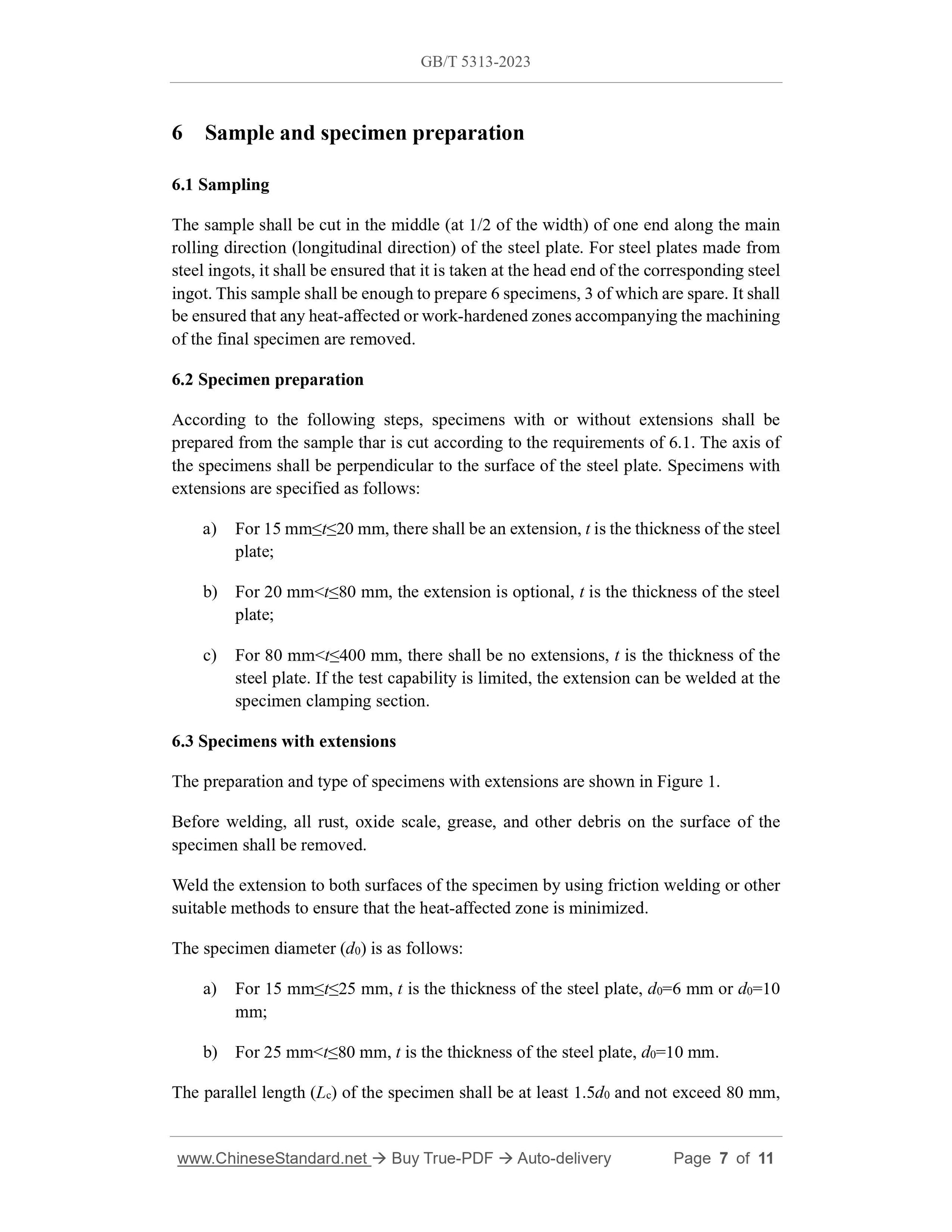1
/
von
4
PayPal, credit cards. Download editable-PDF and invoice in 1 second!
GB/T 5313-2023 English PDF (GBT5313-2023)
GB/T 5313-2023 English PDF (GBT5313-2023)
Normaler Preis
$165.00 USD
Normaler Preis
Verkaufspreis
$165.00 USD
Grundpreis
/
pro
Versand wird beim Checkout berechnet
Verfügbarkeit für Abholungen konnte nicht geladen werden
Delivery: 3 seconds. Download true-PDF + Invoice.
Get QUOTATION in 1-minute: Click GB/T 5313-2023
Historical versions: GB/T 5313-2023
Preview True-PDF (Reload/Scroll if blank)
GB/T 5313-2023: Steel plate with through-thickness properties
GB/T 5313-2023
GB
NATIONAL STANDARD OF THE
PEOPLE'S REPUBLIC OF CHINA
ICS 77.140.50
CCS H 46
Replacing GB/T 5313-2010
Steel plate with through-thickness properties
ISSUED ON: SEPTEMBER 7, 2023
IMPLEMENTED ON: APRIL 1, 2024
Issued by: State Administration for Market Regulation;
Standardization Administration of PRC.
Table of Contents
Foreword ... 3
1 Scope ... 5
2 Normative references ... 5
3 Terms and definitions ... 5
4 Grade expression method ... 5
5 Technical requirements ... 6
6 Sample and specimen preparation ... 7
7 Test methods ... 10
8 Inspection rules ... 10
Steel plate with through-thickness properties
1 Scope
This document specifies the grade expression method, technical requirements, sample
and specimen preparation, test methods, and inspection rules for steel plates with
through-thickness properties.
This document applies to killed steel plates with a thickness of 15 mm~400 mm.
2 Normative references
The following documents contain the provisions which, through normative reference in
this document, constitute the essential provisions of this document. For the dated
referenced documents, only the versions with the indicated dates are applicable to this
document; for the undated referenced documents, only the latest version (including all
the amendments) is applicable to this document.
GB/T 228.1 Metallic materials - Tensile testing - Part 1: Method of test at room
temperature
GB/T 2970 Method for ultrasonic testing of thicker steel plates
GB/T 17505 Steel and steel products - General technical delivery requirements
3 Terms and definitions
The following terms and definitions apply to this document.
3.1 through-thickness properties
The deformation performance that is perpendicular to the surface of the steel plate and
reflects the ability of the steel plate to resist lamellar tearing.
NOTE: The through-thickness properties are usually evaluated by the reduction of area obtained from
the tensile test in the thickness direction.
4 Grade expression method
The grade of steel plate with through-thickness properties consists of the original grade
of the product and the level of through-thickness properties (Z15, Z25, or Z35).
6 Sample and specimen preparation
6.1 Sampling
The sample shall be cut in the middle (at 1/2 of the width) of one end along the main
rolling direction (longitudinal direction) of the steel plate. For steel plates made from
steel ingots, it shall be ensured that it is taken at the head end of the corresponding steel
ingot. This sample shall be enough to prepare 6 specimens, 3 of which are spare. It shall
be ensured that any heat-affected or work-hardened zones accompanying the machining
of the final specimen are removed.
6.2 Specimen preparation
According to the following steps, specimens with or without extensions shall be
prepared from the sample thar is cut according to the requirements of 6.1. The axis of
the specimens shall be perpendicular to the surface of the steel plate. Specimens with
extensions are specified as follows:
a) For 15 mm≤t≤20 mm, there shall be an extension, t is the thickness of the steel
plate;
b) For 20 mm< t≤80 mm, the extension is optional, t is the thickness of the steel
plate;
c) For 80 mm< t≤400 mm, there shall be no extensions, t is the thickness of the
steel plate. If the test capability is limited, the extension can be welded at the
specimen clamping section.
6.3 Specimens with extensions
The preparation and type of specimens with extensions are shown in Figure 1.
Before welding, all rust, oxide scale, grease, and other debris on the surface of the
specimen shall be removed.
Weld the extension to both surfaces of the specimen by using friction welding or other
suitable methods to ensure that the heat-affected zone is minimized.
The specimen diameter (d0) is as follows:
a) For 15 mm≤t≤25 mm, t is the thickness of the steel plate, d0=6 mm or d0=10
mm;
b) For 25 mm< t≤80 mm, t is the thickness of the steel plate, d0=10 mm.
The parallel length (Lc) of the specimen shall be at least 1.5d0 and not exceed 80 mm,
Get QUOTATION in 1-minute: Click GB/T 5313-2023
Historical versions: GB/T 5313-2023
Preview True-PDF (Reload/Scroll if blank)
GB/T 5313-2023: Steel plate with through-thickness properties
GB/T 5313-2023
GB
NATIONAL STANDARD OF THE
PEOPLE'S REPUBLIC OF CHINA
ICS 77.140.50
CCS H 46
Replacing GB/T 5313-2010
Steel plate with through-thickness properties
ISSUED ON: SEPTEMBER 7, 2023
IMPLEMENTED ON: APRIL 1, 2024
Issued by: State Administration for Market Regulation;
Standardization Administration of PRC.
Table of Contents
Foreword ... 3
1 Scope ... 5
2 Normative references ... 5
3 Terms and definitions ... 5
4 Grade expression method ... 5
5 Technical requirements ... 6
6 Sample and specimen preparation ... 7
7 Test methods ... 10
8 Inspection rules ... 10
Steel plate with through-thickness properties
1 Scope
This document specifies the grade expression method, technical requirements, sample
and specimen preparation, test methods, and inspection rules for steel plates with
through-thickness properties.
This document applies to killed steel plates with a thickness of 15 mm~400 mm.
2 Normative references
The following documents contain the provisions which, through normative reference in
this document, constitute the essential provisions of this document. For the dated
referenced documents, only the versions with the indicated dates are applicable to this
document; for the undated referenced documents, only the latest version (including all
the amendments) is applicable to this document.
GB/T 228.1 Metallic materials - Tensile testing - Part 1: Method of test at room
temperature
GB/T 2970 Method for ultrasonic testing of thicker steel plates
GB/T 17505 Steel and steel products - General technical delivery requirements
3 Terms and definitions
The following terms and definitions apply to this document.
3.1 through-thickness properties
The deformation performance that is perpendicular to the surface of the steel plate and
reflects the ability of the steel plate to resist lamellar tearing.
NOTE: The through-thickness properties are usually evaluated by the reduction of area obtained from
the tensile test in the thickness direction.
4 Grade expression method
The grade of steel plate with through-thickness properties consists of the original grade
of the product and the level of through-thickness properties (Z15, Z25, or Z35).
6 Sample and specimen preparation
6.1 Sampling
The sample shall be cut in the middle (at 1/2 of the width) of one end along the main
rolling direction (longitudinal direction) of the steel plate. For steel plates made from
steel ingots, it shall be ensured that it is taken at the head end of the corresponding steel
ingot. This sample shall be enough to prepare 6 specimens, 3 of which are spare. It shall
be ensured that any heat-affected or work-hardened zones accompanying the machining
of the final specimen are removed.
6.2 Specimen preparation
According to the following steps, specimens with or without extensions shall be
prepared from the sample thar is cut according to the requirements of 6.1. The axis of
the specimens shall be perpendicular to the surface of the steel plate. Specimens with
extensions are specified as follows:
a) For 15 mm≤t≤20 mm, there shall be an extension, t is the thickness of the steel
plate;
b) For 20 mm< t≤80 mm, the extension is optional, t is the thickness of the steel
plate;
c) For 80 mm< t≤400 mm, there shall be no extensions, t is the thickness of the
steel plate. If the test capability is limited, the extension can be welded at the
specimen clamping section.
6.3 Specimens with extensions
The preparation and type of specimens with extensions are shown in Figure 1.
Before welding, all rust, oxide scale, grease, and other debris on the surface of the
specimen shall be removed.
Weld the extension to both surfaces of the specimen by using friction welding or other
suitable methods to ensure that the heat-affected zone is minimized.
The specimen diameter (d0) is as follows:
a) For 15 mm≤t≤25 mm, t is the thickness of the steel plate, d0=6 mm or d0=10
mm;
b) For 25 mm< t≤80 mm, t is the thickness of the steel plate, d0=10 mm.
The parallel length (Lc) of the specimen shall be at least 1.5d0 and not exceed 80 mm,
Share
